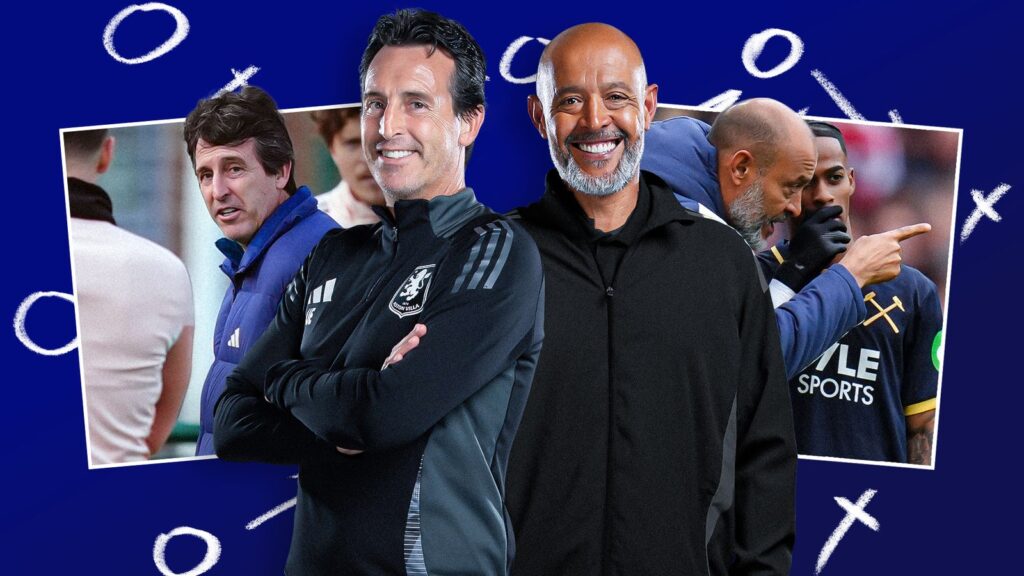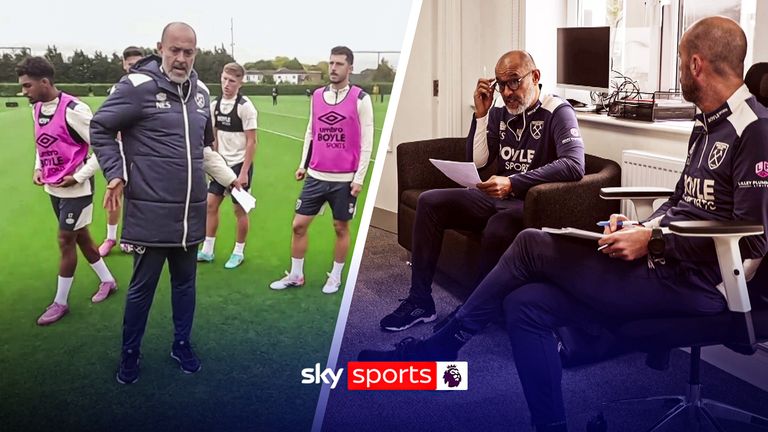“I have made so many mistakes,” Nuno Espirito Santo tells Sky Sports. “So, so many. We all have.” He is referring to the half-time team talk, still one of the great mysteries of football coaching. The game changes but the importance of that 15 minutes remains.
The support structure around the manager has evolved. There are countless staff with their own ideas and thousands of data points now available. But when the half-time whistle blows, the clock is ticking until the restart and one person must find the words.
Research suggests many coaches have been getting those words wrong. Eamon Devlin, founder of boutique sports communication company Minute9, is conducting a PhD on that very subject, the first in the world to study half-times in elite football.
Key findings include the realisation that while managers focus on what is going wrong, players are looking for practical information on how to correct it. With so little time, the messaging needs to be concise, clear and come when the players are able to take it in.
Many of the best coaches have figured that out for themselves through the sort of trial and error to which Nuno alludes. “What we have is a routine,” he explains. “For the players, in that moment, it is about silence. Silence, recovery and physiotherapy.”
He adds: “After 45 minutes of pressure, of being mentally focused, players are tired. Not only the legs but their minds. This is a moment to breathe, to settle down, recover and go again. Inside that recovery has to be the mental space to give them time to relax.”
Unai Emery has much the same approach. “I like to let the players calm down,” Emery tells Sky Sports. “I give them five minutes to speak to the doctor, the kitman, the physios.” That brief period is an opportunity for the coach to collect their thoughts too.
Minute9’s data reveals that the average half-time team talk in elite football lasts six minutes and 23 seconds. Evidence-based findings suggest that the optimum time is between one and three minutes because there is a limit to how much information players can absorb.
This also allows more time for coaches to speak one-on-one. There is also the need to consider the different cultures and languages in a Premier League dressing room. Many coaches are now using instantaneous translators to get the message across.
Elite coaches understand this intuitively. “The window of attention is short and it has to be accurate,” says Nuno. “It is not about long messages because the adrenaline is high. You have to make the most of those moments. Everything must be solved in that time.”
Nuno might tinker, going to another formation they have worked on, for example, but he accepts there are limitations. “It is about fine details because the real preparation has to be before,” he points out. “You cannot fix a game at half-time. You can only adjust.”
Emery agrees. During the week, his lengthy meetings are the stuff of legend. At half-time, even for him, brevity becomes king. “Once they are settled, I try to give them short messages, either tactical messages or something that I think will motivate them.”
Finding that balance between the tactical and the psychological is another challenge for coaches. Emery is a coach renowned for his tactical acumen. “Sometimes it is about trying to build a structure, tactically. Trying to get players in their best position,” he says.
But in those moments, he understands the importance of man-management. “The motivation in that moment, it needs to be so quick,” Emery explains. He tries to inspire, talking of “our dreams” and reminding his players of the goals they want to achieve.
“It would be, ‘One more push,’ or something like that. ‘You are the best player’ or ‘We need you because it is through you that we can win this match.’ It is all about getting players feeling comfortable, getting players confident, trying to get the best from them.”
Working out when the message should be tactical and when it should be motivational is a skill that comes with experience. Devlin talks of top coaches having “six different records” that they can play, depending on the situation. Picking the right one is key.
“It has to be natural,” insists Nuno. He cannot plan it beforehand but he does have certain tools at his disposal. It is said that the modern coach cannot shout at players like they used to but used sparingly it can still be useful in jolting a team into action.
“If you stand there looking at them, you can see [what is required] if you read the room. It might be better to go to the board and spend five minutes scribbling. But sometimes you can say more by kicking a bucket or just not even speaking at all, for example.”
Minute9’s findings suggest that “more emotionally charged stuff loses impact if you do it twice a week” and he has found that there is a tendency for coaches to talk more when their team is losing, bombarding players with information because of their own nerves.
Nuno and Emery, having taken charge of over 1600 games between them, are unlikely to be guilty of that. Minute9’s work is helping to fast-track the learning process for other coaches in the future. But perhaps learning from mistakes will always be part of this job.
Five key questions for coaches from the Minute9 half-time toolbox
Who (really) needs to be in the dressing room at half-time? Subs? Owners? Chairmen?How long does it take players (and coaches) to be sufficiently settled to hear a half-time message? It is at least five minutes.How are the coaches finding out what the players know and feel about the first half?In addition to video clips, what visual aids to players have access to at half-time? (e.g. specific stats players value and want to see)What is the ONE THING coaches want players to remember for the entire second half? (e.g. the intensity of the press)


